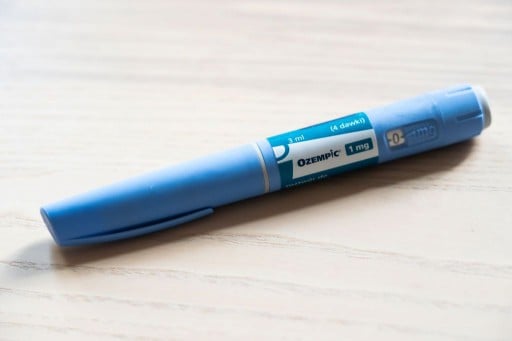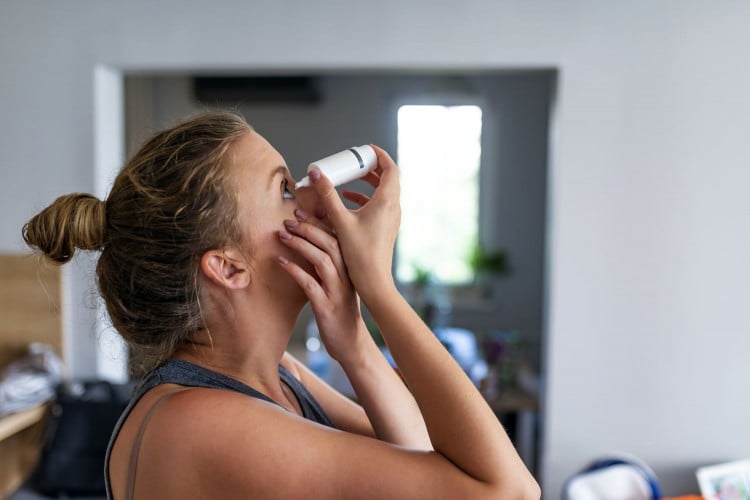- New research found that a majority of heart attack and stroke survivors report having high cholesterol.
- Nearly half of those survivors are unaware that low-density lipoprotein cholesterol (LDL cholesterol) is “bad" cholesterol.
- Experts recommend patients maintain awareness of cholesterol levels and work to stay within the healthy range to prevent heart disease, heart attack, and stroke.
A majority of heart attack and stroke survivors report having high cholesterol, but nearly half are unaware that low-density lipoprotein cholesterol (LDL cholesterol) is commonly referred to as “bad cholesterol.”
That’s according to a new survey from the American Heart Association (AHA) conducted by The Harris Poll.
This knowledge gap can have severe consequences, as too much low-density lipoprotein (LDL) cholesterol causes plaque build-up in the arteries that feed the brain and heart. Knowing your numbers and how they contribute to your overall risk of heart attack and stroke is essential for reducing heart disease risk.
The AHA recommends people without preexisting health conditions should aim for an LDL level below 100 mg/dL; if you’ve had a heart attack or stroke or are already taking cholesterol-reducing medications, the goal may change to below 70 mg/dL.
“High cholesterol is the number 1 risk factor for developing heart disease,” Yu-Ming Ni, MD, a cardiologist and lipidologist at MemorialCare Heart and Vascular Institute at Orange Coast Medical Center in Fountain Valley, California told Health.
“This is why cardiologists focus so much on lowering cholesterol to prevent heart disease,” he said
Regardless of your cardiovascular history, understanding cholesterol and lowering it to healthy levels can save your life.
“It is important to know your cholesterol numbers and know what is good and what is bad cholesterol,” said Ni.
“The key takeaway is that most heart attacks and strokes are preventable,” said Roger Blumenthal, MD, professor of Medicine and Kenneth Jay Pollin Professor of Cardiology, director of the Johns Hopkins Ciccarone Center for the Prevention of Cardiovascular Disease in Baltimore, Maryland, and American Heart Association expert.

Getty Images / Westend61
What to Know About ‘Bad’ Cholesterol
LDL cholesterol is often called the “bad cholesterol” because of its strong association with heart disease.
While the AHA notes that LDL cholesterol is necessary to build cells—meaning it’s not all bad—too much of it can cause health problems.
Ni said he likes to call LDL cholesterol the “lousy cholesterol,” so it is easy to remember.
“The higher the LDL cholesterol, the higher the risk for heart disease,” he said.
Blumenthal also refers to LDL as the bad or “lousy cholesterol,” saying we want it as low as possible. On the other hand, high-density lipoprotein is “good” cholesterol and we want it as high as possible.
“If you have already had a heart attack or stroke, the typical goal for LDL cholesterol is less than 70 mg/dL,” Ni explained. This is aligned with the American Heart Association’s (AHA) recommendations.
Ni did clarify that individuals who are at a very high risk for repeated cardiovascular events may want to aim lower, around 55 mg/dL.
In 2019, the European Society of Cardiology/European Atherosclerosis Society Dyslipidemia Guidelines recommend an LDL-C goal of <55 mg/dL for people with significantly high risk for cardiovascular events like heart attack and stroke.
They further suggest considering an even lower goal of <40 mg/dL for people who have had at least two cardiovascular events within two years despite optimal statin therapy.
An LDL-C level of less than 50 mg/dL is considered low.
“These might be people with multiple heart attacks, both heart attack and stroke, heart attack or stroke in a diabetic, and other scenarios,” said Ni. “So if your LDL cholesterol is not at goal, ask your cardiologist what can be done to lower your LDL cholesterol further.”
What Can You Do to Lower Your Risk of High Cholesterol?
According to Ni, “The main way to lower your cholesterol is to examine your diet carefully to reduce cholesterol in the food you eat.”
Your body makes all the LDL cholesterol necessary for healthy cell development. Consuming foods high in cholesterol creates an effect of producing more LDL cholesterol.
“High cholesterol sources include shrimp and shellfish, red meat, and egg yolks,” Ni said.
Reducing animal products in your diet may help you naturally decrease cholesterol to a more desirable level.
“If you consume a purely plant-based diet, you are likely to consume zero cholesterol,” Ni said. “Replacing solid fats— like butter, with liquid fats— like vegetable oils, can help as well,” he said.
Blumenthal echoed this in his suggestion to eat more fruits vegetables and seafood while reducing saturated fats and sweets.
Lowering your risk can also come down to following the American Heart Association’s acronyms: the three Cs and ABCS.
The three Cs for reducing cholesterol include:
- Check your cholesterol levels so you know your numbers
- Change your diet and lifestyle to help improve LDL levels
- Control your cholesterol as needed
When to Check Your Cholesterol
The American Heart Association recommends all adults age 20 or older have their cholesterol (and other traditional heart disease risk factors) checked every four to six years.
Blumenthal said to also remember the ABCS:
- Aspirin (when appropriate)
- Blood pressure control
- Cholesterol management
- Smoking cessation
According to the AHA, both smoking and vaping lower “good” HDL cholesterol levels, as well as compounding risk factors for heart disease like high blood pressure and diabetes.
Blumenthal explained that the ABCS can also be added to and include: assessment of risk; diet/weight, diabetes prevention, and exercise.
Assessment of risk is checking your cholesterol levels and considering your personal risk factors for heart disease, heart attack, or stroke.
Exercising, he said could be walking briskly, more than 30 minutes, nearly every day. This pairs with the AHA recommendation that most healthy people get 150 minutes or 2.5 hours of physical activity per week to see heart health benefits.
If you have had a previous heart attack or stroke and are not sure about whether or not you should be exercising, how much, or how to get started, consult with a healthcare provider or cardiologist.
Cholesterol-lowering Supplements: What Works, What Doesn't
Related pages
Faster Walking Speed Linked to Decreased Risk of Type 2 Diabetes
New research linked faster walking speeds with a reduced risk of type 2 diabetes.Experts explain thi

How Much Time Should You Spend Sitting Each Day?
New research found that swapping moments of sitting for a few minutes of movement can significantly

FDA Adds New Side Effect Warning to Ozempic Label
The FDA recently added a new potential adverse reaction to the label of type 2 diabetes drug Ozempic

Cantaloupe Recalled Due to Salmonella Contamination
Nearly 6,500 cases of whole cantaloupe, from the brand Kandy, have been voluntarily recalled, accord

The Best Temperature for Sleep for Older Adults
New research found that sleeping in too hot or too cold of an environment could negatively impact so

FDA Warns Against Using These Eye Drop Products Because of Potential Contamination
The FDA has issued a warning about two brands of eye drops for potential fungal and bacterial contam

